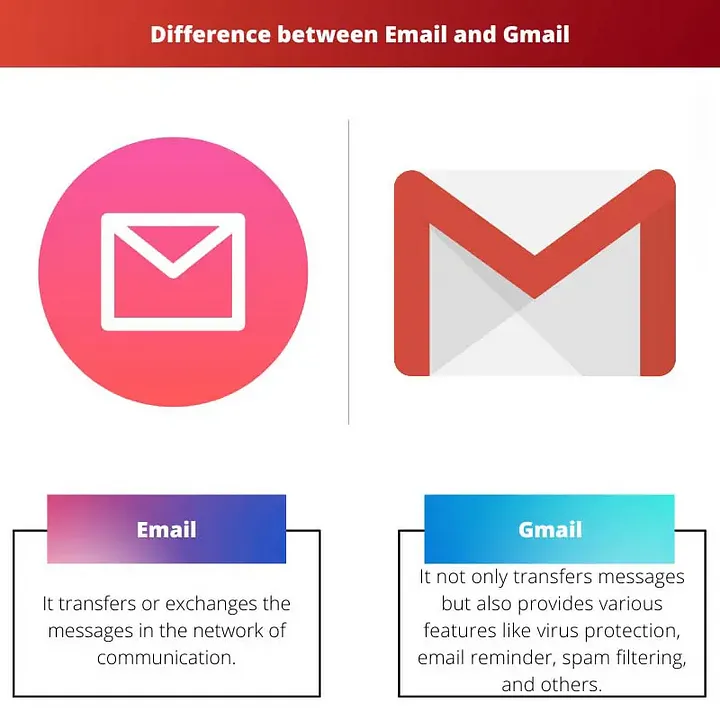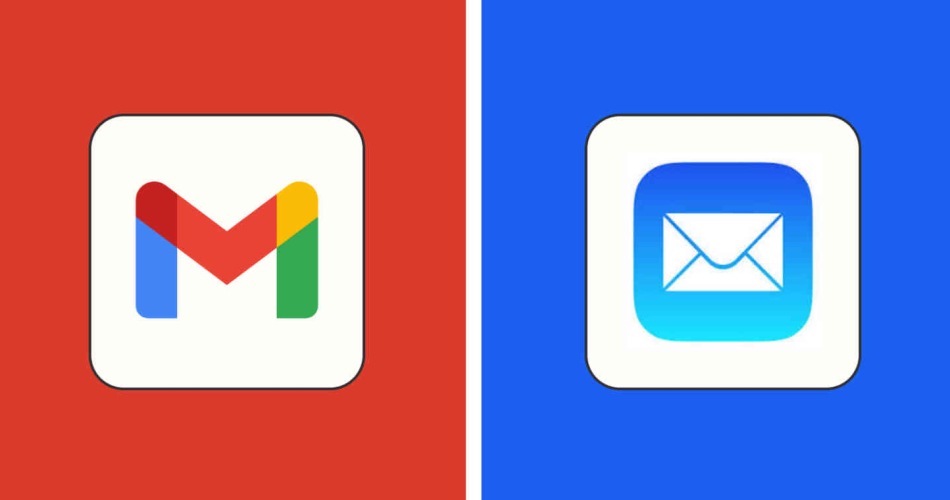In the digital age, email has become an indispensable tool for communication. However, confusion often arises between the terms “Email” and “Gmail.” While both are related to electronic messaging, they serve different purposes and have distinct features. Let’s explore the dissimilarities between email and Gmail to gain a clearer understanding.

What is Email?
Email, short for electronic mail, is a method of exchanging digital messages over the internet. It allows users to send and receive messages asynchronously, meaning that the sender and recipient do not have to be online simultaneously. Email operates through email servers, which store, forward, and deliver messages.
Key Characteristics of Email:
- Universal: Email is a universal communication tool, accessible across different platforms and email service providers.
- Interoperability: Users can send emails between different email services, enabling communication regardless of the sender’s or recipient’s email provider.
- Custom Domains: Email services often support custom domain names, allowing businesses and individuals to use personalized email addresses (e.g., [email protected]).
Varied Clients: Email can be accessed through various email clients, such as Outlook, Thunderbird, Apple Mail, and web-based interfaces.
What is Gmail?
Gmail, developed by Google, is a specific email service provider that offers email hosting and management. It is one of the most popular email platforms globally, known for its intuitive interface, robust features, and integration with other Google services.
Key Characteristics of Gmail:
- Google Integration: Gmail seamlessly integrates with other Google services, including Google Drive, Google Calendar, and Google Meet, enhancing productivity and collaboration.
- Search Capabilities: Gmail boasts powerful search functionality, allowing users to quickly find and retrieve emails using keywords, filters, and labels.
- Storage: Gmail provides generous storage space for emails and attachments, with options for expansion through subscription plans.
- Security: Gmail prioritizes security features such as two-factor authentication, spam filtering, and encryption to safeguard users’ data and privacy.
- Mobile Accessibility: Gmail offers dedicated mobile apps for both Android and iOS devices, ensuring access to emails on the go.
Conclusion:
In summary, email is a broad term encompassing the concept of electronic messaging, while Gmail is a specific email service provided by Google. While email services like Gmail offer advanced features and integration, traditional email remains a versatile and widely used communication tool. Understanding the differences between email and Gmail enables users to make informed choices based on their communication needs and preferences.
FAQs (Frequently Asked Questions) about Gmail and Email:
- Can I use Gmail with other email providers? Yes, Gmail supports accessing and sending emails from other email accounts through its “Check email from other accounts” feature.
- Is Gmail the only email service available? No, there are numerous email service providers besides Gmail, such as Outlook.com, Yahoo Mail, and ProtonMail.
- Can I use my custom domain with Gmail? Yes, Gmail offers the option to use custom domain names for email addresses through its G Suite (now Google Workspace) subscription plans.
- Is Gmail free to use? Yes, Gmail offers a free version with basic features and storage. However, there are subscription plans available for expanded features and storage capacity.
- Are emails sent through Gmail encrypted? Yes, Gmail uses encryption protocols to secure emails both in transit and at rest, ensuring data privacy and security.

